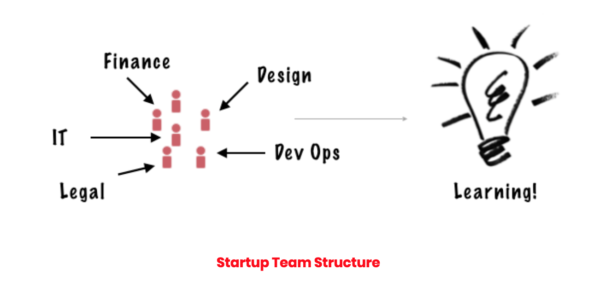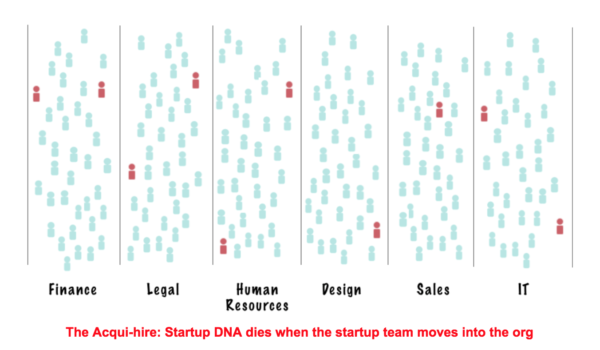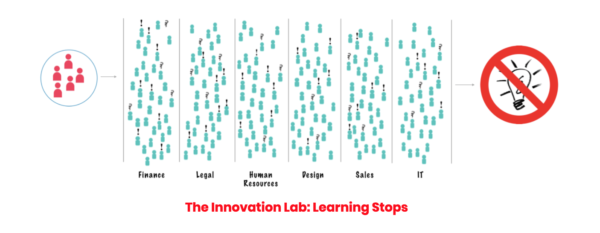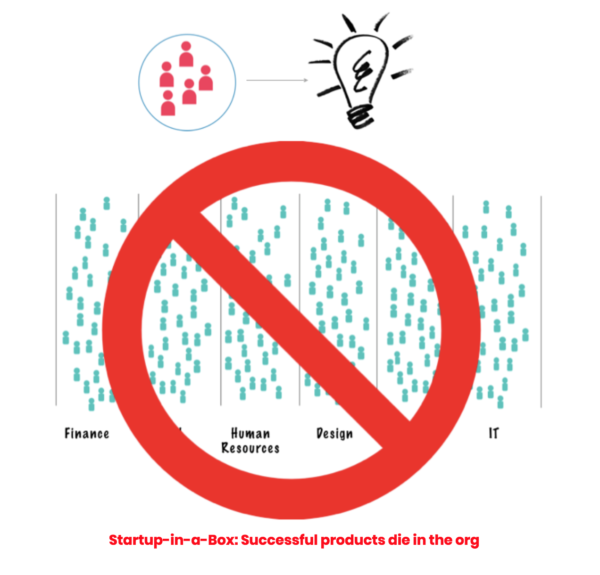3 approaches to innovation that fail — and 1 that succeeds

Companies, eager for approaches to innovation they can quickly implement, turn to the same strategies again and again. Acquiring the innovative culture they want, setting up a lab siloed from the rest of the company or creating a team to work like a startup, all of these strategies fail once they run up against the established culture of the organization.
There is one innovation strategy that does succeed again and again however. It’s not quite as quick as buying or building your way out of a stagnant corporate culture, but it’s results are much more durable. First, though, the three approaches to innovation that don’t work.
Innovation Approach No. 1: The Acqui-hire
The big company acquires a startup for their DNA. They hope the DNA will spread in their organization giving them an edge over the competition.
How it fails:
The special DNA that made the startup successful withers and dies as the team gets pulled into the org. Senior staff leave as soon as they vest.
Why?
Startups and big companies have a fundamental difference in their structures.
Startups have a structure that supports adaptation and learning. Small groups of people with different expertise all work together – in areas of high uncertainty – toward an outcome. They can try lots of small things, learn what does and does not work before committing company resources. They take many shots at the same goal.

Conversely, big companies are structured to deliver a well-known solution to a well-understood market. At scale. Their structure reflects that. They organize people in functional silos. People work with an eye towards fulfilling requirements. Gate-keepers ensure that everything goes according to plan.
When the startup team is pulled into the org, the the team is broken up. Everyone’s moved to the department that corresponds to their discipline. It’s not just the people that make innovation happen, it’s also a startup team structure. And that was dismantled in the acqui-hire.

Innovation Approach No. 2: The Lab
The Innovation Lab runs outside the business structure. The lab is supposed to benefit from all the assets of the parent company — brand cachet, access to customers, marketing reach, etc. — but be protected from the bureaucracy.
How it fails:
The learning slows to a crawl. After a year the Innovation Lab is dismantled. Or the head of Innovation is removed.
Why?
As soon as this innovation team needs to interface with the org, the learning stops. They hit a brick wall when they need brand approval, access to customers, or to schedule an email campaign.
For instance, imagine this lab team trying to put a super early version of a product in the hands of just 10 customers, so the team can learn. They will be routed to legal and compliance, raising all sorts of red flags. They will need to justify to many parties that they are only working with 10 people to learn early. But the parent org is optimized for delivery at scale, so the notion for doing anything for just 10 customers does not compute. If the lab team doesn’t have a sponsor or a business owner to intervene, they are stuck.
The upshot is this: the team is not able to learn without the support of the org, so they end up with the same barriers as before. Only this time with impossible expectations.
Colleagues perceive the innovation lab as a special playground with lackadaisical standards. This resentment hampers cooperation as the startup team goes outside normal processes. Colleagues see them as trying to take short-cuts, cut corners, or as ‘not-getting it’.

If people in the org do cooperate, the relative pace of the parent company is slow. So the team gets very few shots on goal.
And since they only get one shot, they end up doing and making complex things when they ought to be running quick experiments. They juice their predictions about their product idea to gain the support they need. Out of survival, they’ve aligned themselves to the pace and processes of the org.
Innovation Approach No. 3: The Startup-in-a-Box
Some companies go to an outside firm that specializes in being a Startup-in-a-Box. Or they build their own team and put them completely off site with their own P&L.
These teams are in the same situation as the the Innovation Lab. They can’t move fast and work with the org. The Startup-in-a-Box will run experiments entirely off-brand to get around this issue.
How it fails:
If they do find product-market fit (hooray!), the new business is destined to die once it’s taken over by the parent org (sigh).
Why?
The team may have found product-market fit. But moving the product into the ‘delivery-at-scale’ structure doesn’t work. It’s not yet a well-known solution being delivered to a well-understood market. Learning is still important.

The 6-Step Approach to Innovation that Does Work
The good news: There are big companies doing innovation work and growing an entrepreneurial capacity in their teams. The bad news: It’s not a turn-key solution, and it’s hard. Building entrepreneurial capability in a company touches every function.
But if you’re ready to give it a shot, this is how you begin. Start small and get some wins. That will lay the foundation for other structural changes down the road. Wins include unlocking new revenue streams. Wins also include killing bad projects that will deliver no value to the company. This saves significant time, talent and money.
Do these things:
- Name your mission and create one startup team to follow it.
You need a mission or an outcome that is meaningful for the business. Then assemble a team of three to five people from different departments, who all have a stake in that mission. The mission can be anything from “Speed up X internal process by 50%” to “Find a new revenue stream for connected kitchen appliances with millennials in China.” - Let the startup team work together in the same physical space. Full-time.
Companies have a bad habit of creating part-time committees to do the work of a startup team. That’s a great way to have a plethora of meetings and email threads with no meaningful outcomes. This startup team needs permission to more or less work full-time on a single mission. - Train them to design and run good experiments.
Validated learning is not rocket science. But for this to work, teach teams the basics of good experiment design. A workshop or a few hours with a coach will set them up to succeed. - Limit funding and tie increases to learning goals.
No entitlement funding of zombie projects. Give the team a small, secure budget. As the product and business ideas are validated, those ideas get additional funds. ‘Validation’ means an increased likelihood of success. Increased because we’ve been learning with a real (albeit small) set of customers. - Keep the team safe.
Keep the team, but fire bad projects. If the team is exploring a product/business that we learn isn’t viable, pivot to a new one. If you are not clear about this up front, you will unwittingly plant bad incentives.
I can’t stress this point enough. Teams will feel that in order to survive they must prove their ideas and plans are correct. This defeats the whole purpose.
Validated learning can only happen if you dive headlong into discovering where your ideas and plans are wrong. And the team can’t do so if they fear losing their reputation or job. - Provide executive air cover.
Since the team will be working outside of normal business processes, they will need an executive sponsor. This person creates exceptions for the team (air cover). The sponsor clears roadblocks when the learnings to be had exceed the risk of going outside normal process.
Socializing the wins will create excitement in other parts of the company and allow other small teams to ramp up. Learning how to do these things in your own company culture is the best way to get traction.
 Thanks to Andi Plantenberg for contributing this piece. If you want to bring the entrepreneurial spirit to your large organization, Lean Startup Company’s Education Program can help. We empower you to solve your own problems using entrepreneurial management, no matter your industry, size company, or sector of the economy. Email us. We’re here to help.
Thanks to Andi Plantenberg for contributing this piece. If you want to bring the entrepreneurial spirit to your large organization, Lean Startup Company’s Education Program can help. We empower you to solve your own problems using entrepreneurial management, no matter your industry, size company, or sector of the economy. Email us. We’re here to help.
